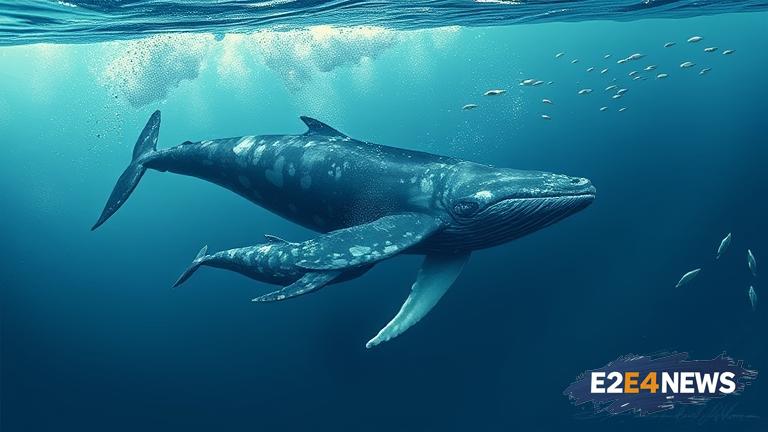The annual migration of humpback whales has reached unprecedented numbers, with over 141,000 individuals making their way along the ‘Humpback Highway’, a 5,000-mile stretch of ocean that spans from Antarctica to the coastal waters of Australia. This remarkable phenomenon has been observed and documented by scientists and researchers, who are thrilled to see the population of these majestic creatures thriving. The ‘Humpback Highway’ is a critical migration route for humpback whales, providing them with a safe passage to their breeding and feeding grounds. The whales travel in large groups, often led by experienced females, and can be seen breaching, lobtailing, and slapping their tails in a spectacular display of behavior. The record-breaking numbers are a testament to the success of conservation efforts, which have been in place for decades to protect these incredible animals. Humpback whales were once listed as an endangered species, but thanks to international cooperation and the implementation of protective measures, their population has been steadily increasing. The ‘Humpback Highway’ is not only an important migration route but also a vital breeding ground for the whales, with females giving birth to their young in the warm, coastal waters. The calves are then nursed and cared for by their mothers, who teach them essential survival skills and guide them on their journey. As the whales migrate, they feed on krill and small fish, which are abundant in the cold, nutrient-rich waters. The ‘Humpback Highway’ is also home to a diverse range of marine life, including dolphins, seals, and seabirds, which can be seen interacting with the whales. Scientists are studying the migration patterns and behavior of the humpback whales, using advanced technologies such as satellite tracking and acoustic monitoring. This research is providing valuable insights into the lives of these incredible creatures and helping to inform conservation efforts. The record-breaking numbers of humpback whales are not only a cause for celebration but also a reminder of the importance of continued conservation efforts. Climate change, pollution, and overfishing are just some of the threats that humpback whales face, and it is essential that we continue to work together to protect these amazing animals. The ‘Humpback Highway’ is a unique and special place, and it is our responsibility to ensure that it remains a safe and healthy environment for the humpback whales and other marine life that call it home. As the whales continue their journey, they will face many challenges, but with our help and support, they can thrive. The record-breaking numbers are a beacon of hope for the future of humpback whales, and it is essential that we continue to monitor and protect these incredible creatures. The ‘Humpback Highway’ is a remarkable example of the beauty and wonder of the natural world, and it is our duty to preserve it for future generations. The humpback whales are an iconic species, and their migration is an event that inspires awe and wonder in people around the world. As we continue to learn more about these incredible creatures, we are reminded of the importance of conservation and the need to protect our planet’s precious marine resources. The record-breaking numbers of humpback whales are a testament to the power of conservation and the impact that we can have when we work together to protect the environment. The ‘Humpback Highway’ is a truly special place, and it is our responsibility to ensure that it remains a thriving and healthy ecosystem for generations to come.
